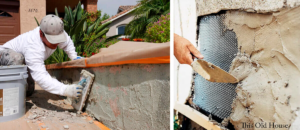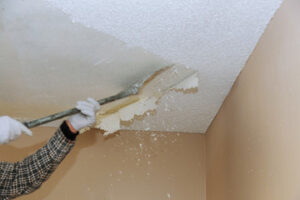The siding installation process can be disruptive to your home. Many contractors make an effort to keep noise and other disturbances to a minimum, especially during meetings and quiet times when children are sleeping.
Ask how they will handle unforeseen challenges that may arise during the project. They should be able to provide you with a reasonable solution that keeps the project on track and within budget. Contact Siding Contractor now!

Siding is a big investment, and homeowners want to know their contractor is licensed and insured. This will help them feel more comfortable during the project and in the case of any damages, it will ease their concerns. It is important to make sure your siding contractor has general liability insurance as well as commercial property and workers’ compensation coverage. In addition, some states may require a surety bond, which reimburses clients in the event of a default by the contractor.
General liability insurance for siding installation contractors protects your business from unexpected costs resulting from accidents or incidents during projects. This includes property damage, bodily injury, and legal fees. For example, if your employee knocks over a homeowner’s ladder, this insurance will cover their repair costs. It also covers medical expenses if a third party gets hurt on the job site. It doesn’t cover faulty workmanship claims, though, so you’ll need professional liability insurance for that.
Commercial auto insurance is another requirement for most siding contractors. This type of policy provides coverage for vehicles rented or owned by the company, as well as those driven by employees. It also pays for pollution cleanup and third-party bodily injury caused by an accident involving your business’s vehicles. It is recommended to look for a commercial package policy, which combines both general liability and property insurance in one affordable package.
Siding installation businesses often use power tools and equipment, which can be expensive to repair or replace in the event of a loss. Commercial property insurance covers these items, as well as the furniture and fixtures used in your business. It will also pay for lost income if your business is forced to close due to property damage.
Cyber insurance, or business interruption insurance, is another important type of insurance for siding installation companies. This policy helps to cover the cost of repairs or replacements after a data breach or cyberattack. It is important to note that this policy does not cover pre-existing damage or the cost of new materials. To find out more about the different types of insurance available for your siding company, speak with a licensed broker.
Stucco is a durable, attractive building material that can give the exterior of your home a new look and boost curb appeal and property value. A skilled stucco contractor can create a quality look and feel for your property by using a variety of materials and techniques. When selecting a stucco contractor, consider several factors, including their licensing and insurance details, years of experience in the field, a strong portfolio of past projects with client references, quality supplies tailored to each project, and effective communication skills and customer service.
It is also important to find out if the contractor you are considering is insured within your state. This will ensure that they follow industry standards and are covered in case of any accidents on the job site. A reliable contractor will be able to provide a copy of their insurance certificate or proof of insurance upon request.
The quality of a stucco project depends on the attention to detail. You want a contractor who takes pride in their work and understands the intricacies of this unique material. They will take time to prepare the substrate and mix the stucco correctly to ensure a smooth and durable finish. They will also pay close attention to the finishing details, such as color and texture, to create a beautiful and lasting impression on your home.
You should also ask about the timeline of the project, and if there are any potential delays that may occur. For example, weather conditions can impact the process by affecting workers’ ability to complete tasks or affect how quickly the stucco can cure. The contractor should be able to explain these possible delays in detail and discuss how they will address them.
Portfolio
A contractor’s portfolio can help you gauge their experience and expertise. It is important to find out if they have worked on projects that are similar to yours, and look for detailed photographs or videos of the work to get an idea of the quality and attention to detail that you can expect from them. Ideally, a stucco contractor will have a diverse portfolio to demonstrate their ability to handle a variety of different types of jobs.
The professionalism of a stucco contractor is another key aspect to consider. Look for punctuality, respectful conduct, and adherence to timelines, which will help ensure that your project runs smoothly and on schedule. Also, it is important to find out if the contractor will provide a contract that details all of the work to be performed and the associated costs. This will protect you from hidden charges and unsatisfactory work, so it is essential to avoid contractors who are reluctant to put their pricing in writing.
In addition to determining the contractor’s experience and qualifications, you should also make sure that they have adequate insurance coverage and are licensed and insured. This will protect you against any unforeseen issues during the project. You should also ask the contractor for references and reviews of previous projects. This will allow you to verify their reliability and customer satisfaction.
Licensing
When you look for a stucco contractor, it’s important to find out what licensing requirements are in your area. This includes obtaining a trade license, passing a background check, and providing proof of insurance and workers’ compensation. These requirements vary by state, so it is best to contact your local government for more information.
Stucco is a beautiful, durable material that can transform the exterior of your home. It adds curb appeal and value, while also being environmentally friendly. However, like any exterior surface, it needs to be maintained properly. Stucco repair cracks, water intrusion, and other problems can result in irreparable damage if not addressed quickly.
To ensure you choose a qualified Stucco Contractor, it’s important to review their portfolio and references. This will help you determine if their work fits your aesthetic and style, as well as whether or not they have experience working on different architectural styles. Stucco contractors with diverse portfolios demonstrate that they have a range of skills and can adapt to various types of construction.
A reputable Stucco Contractor will provide a warranty for their work. This is an indicator of their confidence in their abilities, and will likely cover both material and workmanship for a set period of time. Some contractors even offer maintenance services, which can extend the lifespan of your stucco and prevent future issues.
While it may seem tempting to save money by hiring a less-experienced contractor, you’ll be risking the integrity of your property. Inexperienced contractors may not understand the unique challenges associated with different architectural styles, and may not be able to deal with conditions such as seismic movement or changes in temperature that can cause stucco to crack.
Insurance
Stucco work is a messy business, and there’s always a chance that you or your workers could be injured on the job. This risk can be mitigated with proper insurance coverage.
General liability (GL) insurance is one of the most essential forms of plastering and stucco work business insurance that your company can get. Also known as commercial general liability, it covers your legal expenses and the costs of fixing damage caused to outside parties when you are working on a project. It is often part of a Business Owner’s Policy (BOP) package that combines other important forms of business insurance for small businesses, such as commercial auto and property/building coverage.
Another form of important business insurance for plastering and stucco contractors is workers’ compensation insurance. This covers your employees’ medical bills and lost wages if they are injured while on the job. It’s a requirement for most businesses and is an excellent safety measure to take.



